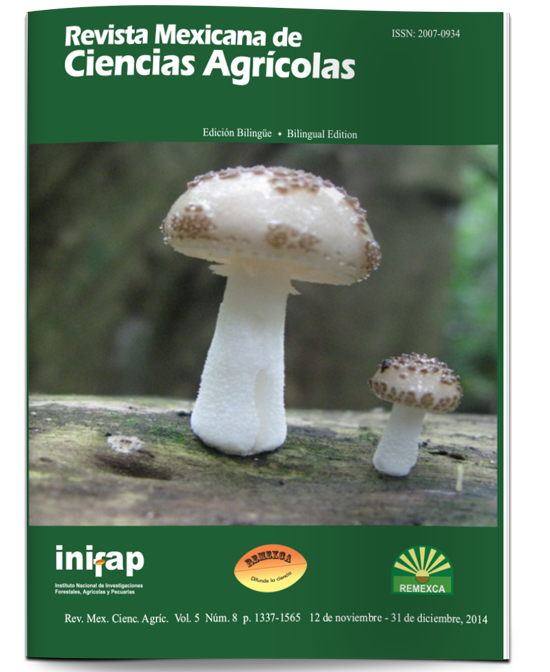Survival of Azospirillum brasilense after applying herbicides on Triticum aestivum L. Var. Altiplano
DOI:
https://doi.org/10.29312/remexca.v5i8.834Keywords:
Azospirillum, Triticum, herbicides, survivalAbstract
Herbicides are widely used in agriculture and are applied in various amounts that may directly or indirectly influence on soil microorganisms and their processes. In order to evaluate the survival of inoculated Azospirillum brasilense in the Altiplano variety of wheat to the application of two types of commercial herbicides, an organochlorine and, the other organophosphorus, the present experiment was established in the Ecozone, of the University of the Americas-Puebla, Mexico, under greenhouse conditions in 2009. The seeds were inoculated before planting with Azospirillum brasilense and, the herbicides were applied 40 days after. The treatments were applied: 1) uninoculated plants (absolute control); 2) inoculation with Azospirillun (inoculated control); 3) inoculated with Azospirillum plus herbicide application 2, 4, D, (organochlorine); 4) inoculated with Azospirillum plus glyphosate herbicide application (organophosphate); 5) without inoculation and applying herbicide 2, 4, D; and 6) without inoculation and application of glyphosate, in a completely randomized design with ten replicates. The survival of the bacteria in the root system was recorded through the use of the most probable number technique, recording the plant height and weight. The results indicated that, the two herbicides (2, 4, D and glyphosate), did not signif icantly affected the population of Azospirillum in the root. Plants inoculated with the bacteria, with or without herbicide treatment showed increased in biomass compared to the non-inoculated plants. Biomass increased with application 2, 4, D.
Downloads
Downloads
Published
How to Cite
Issue
Section
License
The authors who publish in Revista Mexicana de Ciencias Agrícolas accept the following conditions:
In accordance with copyright laws, Revista Mexicana de Ciencias Agrícolas recognizes and respects the authors’ moral right and ownership of property rights which will be transferred to the journal for dissemination in open access. Invariably, all the authors have to sign a letter of transfer of property rights and of originality of the article to Instituto Nacional de Investigaciones Forestales, Agrícolas y Pecuarias (INIFAP) [National Institute of Forestry, Agricultural and Livestock Research]. The author(s) must pay a fee for the reception of articles before proceeding to editorial review.
All the texts published by Revista Mexicana de Ciencias Agrícolas —with no exception— are distributed under a Creative Commons License Attribution-NonCommercial 4.0 International (CC BY-NC 4.0), which allows third parties to use the publication as long as the work’s authorship and its first publication in this journal are mentioned.
The author(s) can enter into independent and additional contractual agreements for the nonexclusive distribution of the version of the article published in Revista Mexicana de Ciencias Agrícolas (for example include it into an institutional repository or publish it in a book) as long as it is clearly and explicitly indicated that the work was published for the first time in Revista Mexicana de Ciencias Agrícolas.
For all the above, the authors shall send the Letter-transfer of Property Rights for the first publication duly filled in and signed by the author(s). This form must be sent as a PDF file to: revista_atm@yahoo.com.mx; cienciasagricola@inifap.gob.mx; remexca2017@gmail.
This work is licensed under a Creative Commons Attribution-Noncommercial 4.0 International license.



